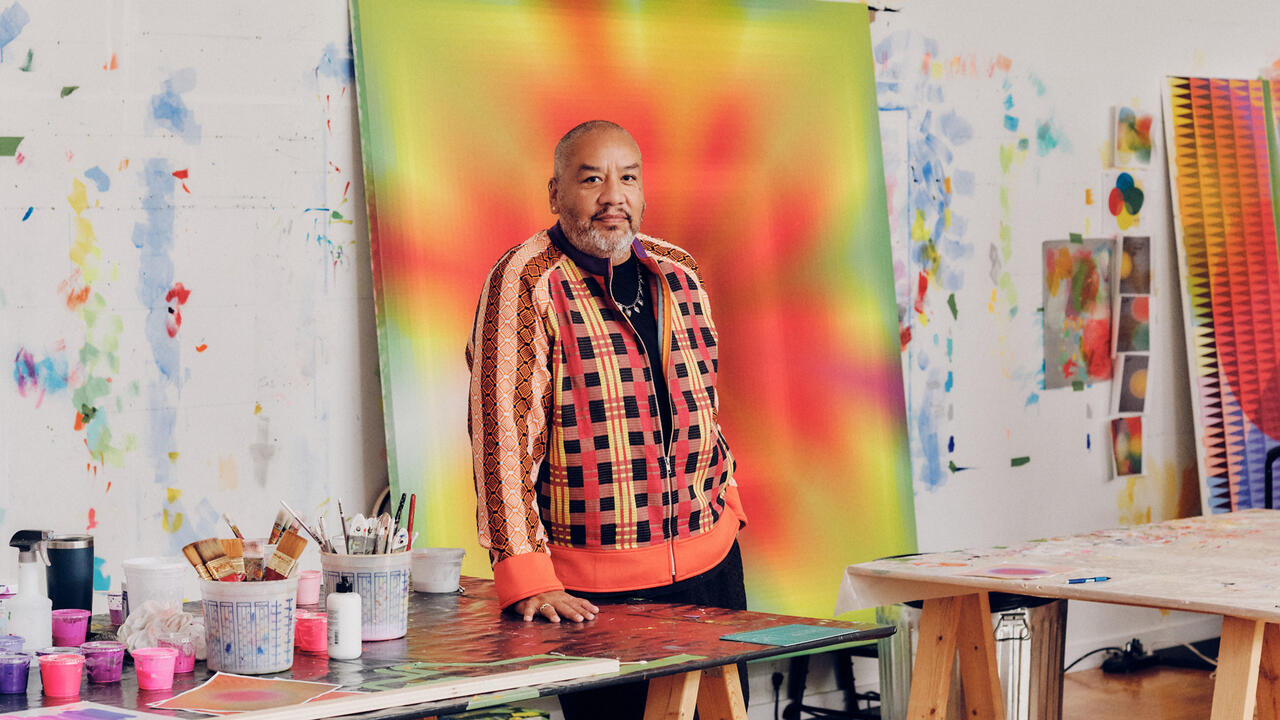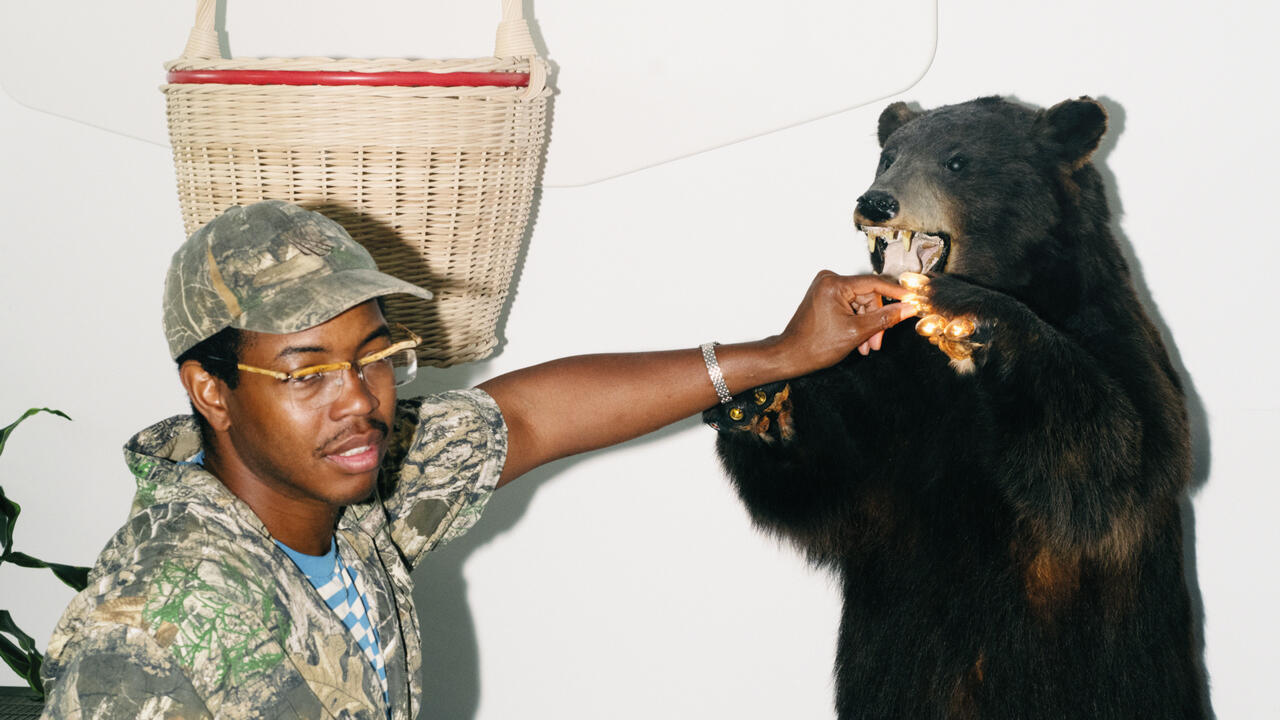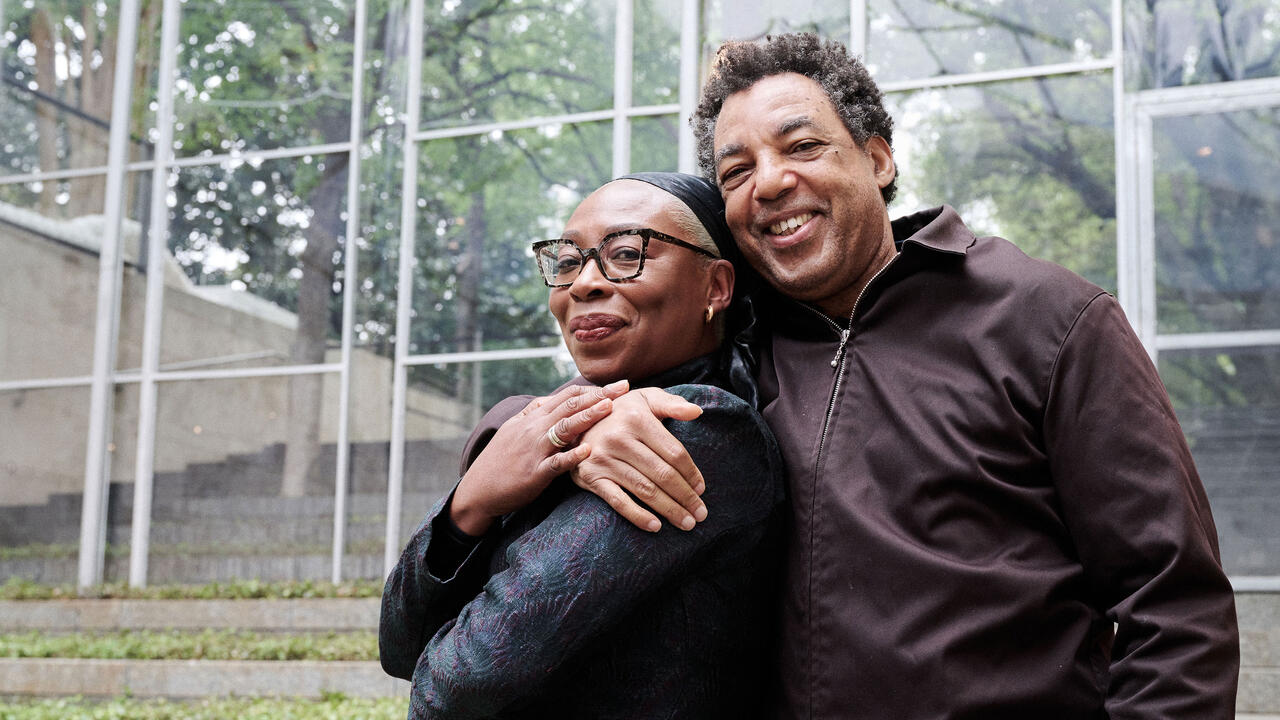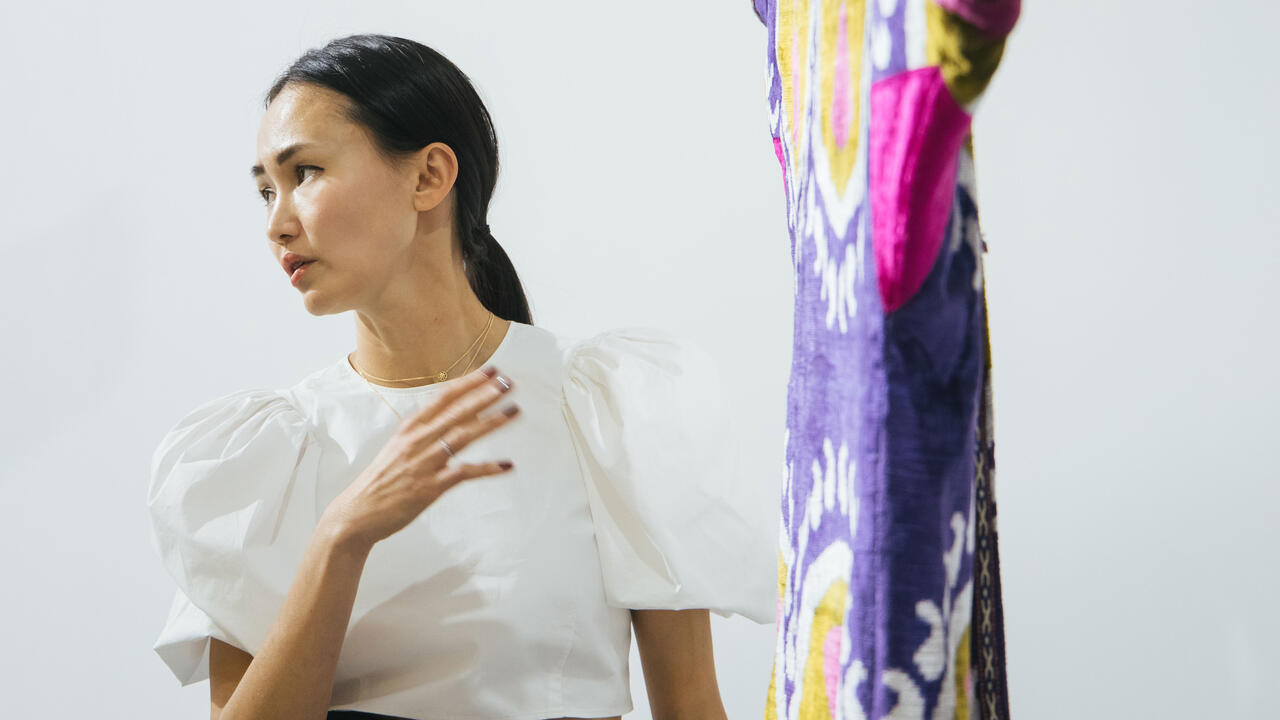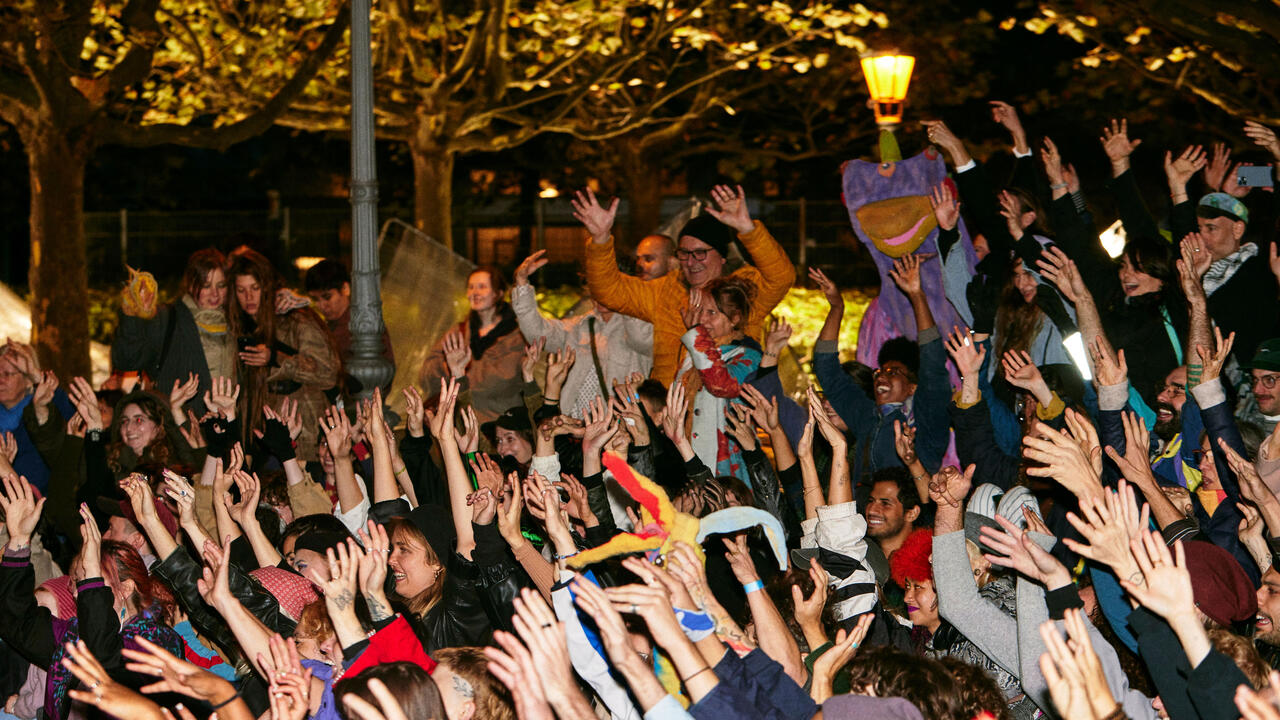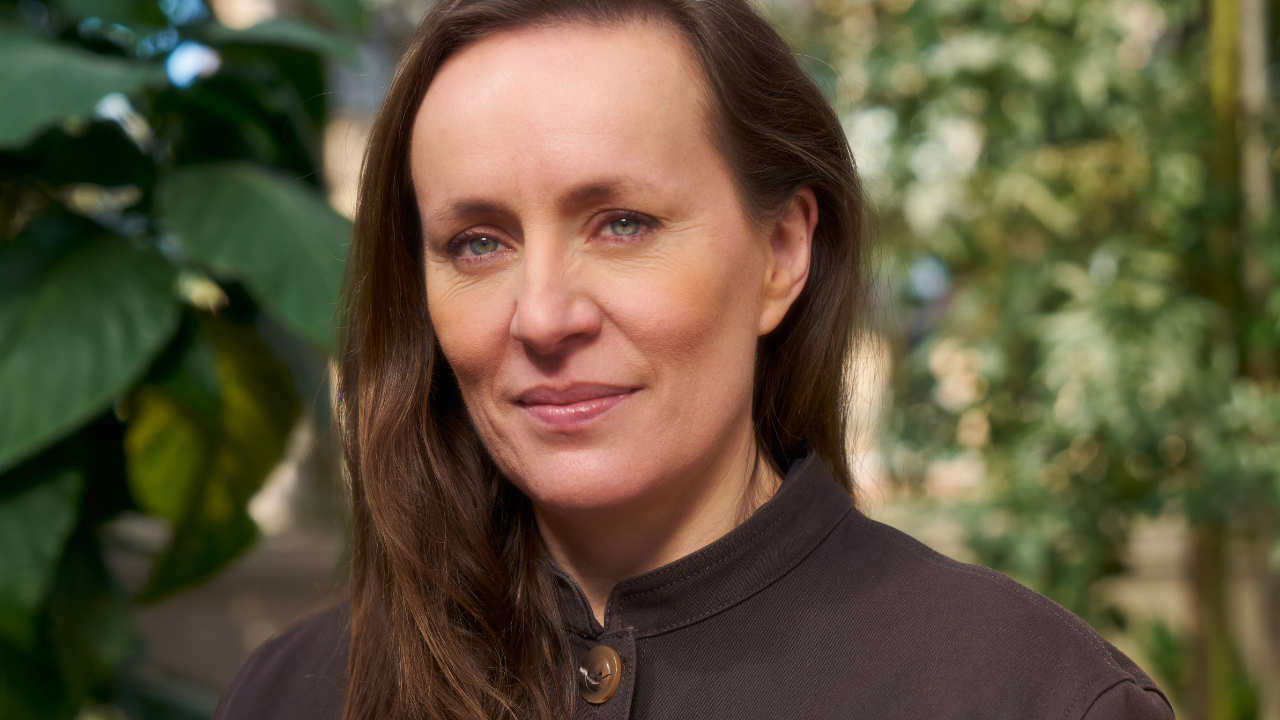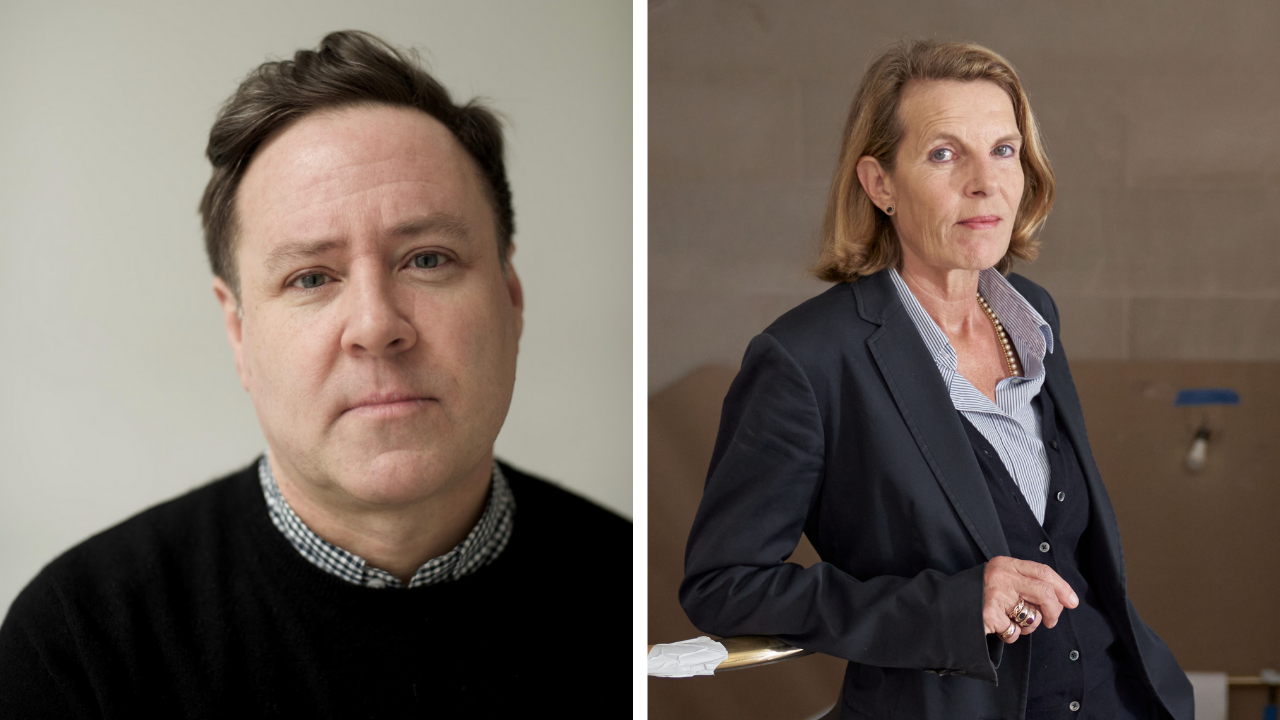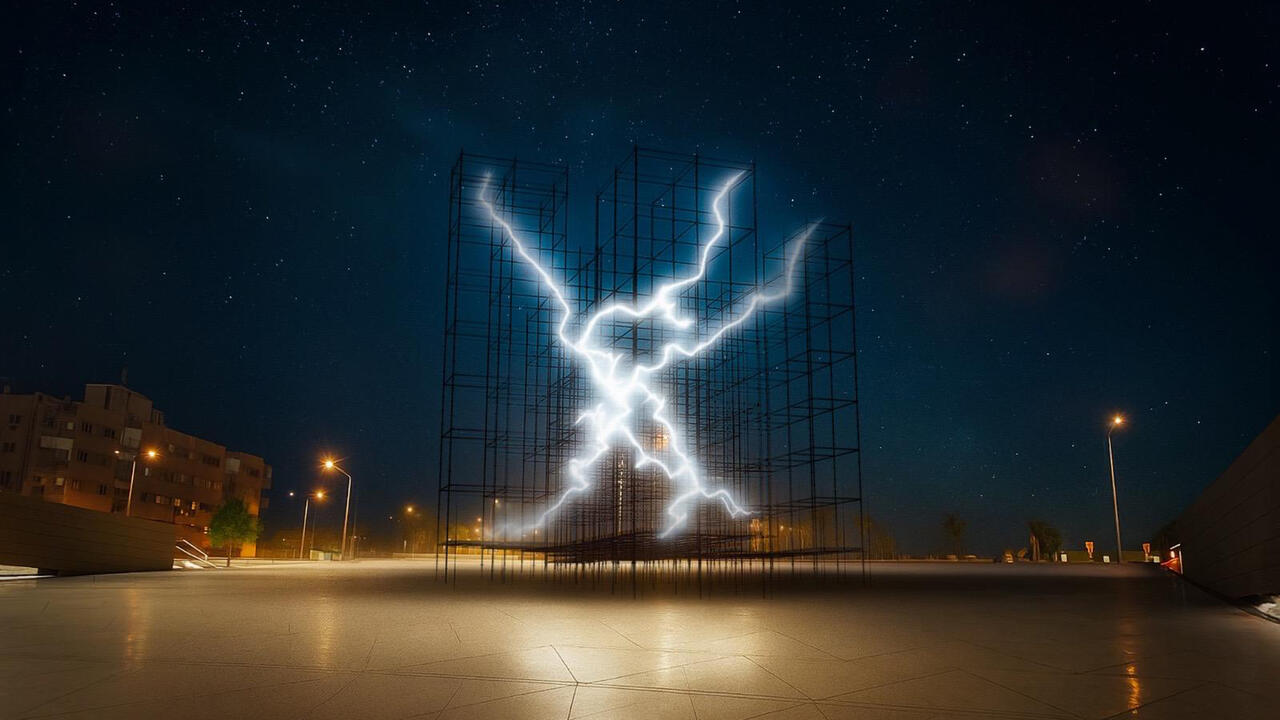The Right Stuff
Phillip King
Phillip King

James Roberts It seems that you have a relentless desire to explore new materials.
Phillip King I've always had an interest in materials. It started off with a passion for sand. I was brought up by the sea and used to play around on the beach. If you dug holes in certain spots you could find clay mixed with the sand and I used to make small things out of it. When I went to art school the drawing classes were very full but the sculpture classes were empty, so I joined them instead and rediscovered working with clay. After a couple of weeks I decided I didn't want to go to class anymore, but wanted to be on my own. I found a cheap basement that I could use as a studio and the first thing I did was to get hold of some clay. I eventually managed to find a local company that made pipes for sewers and got a dark, black clay from them. To help me feel comfortable in my new place I thought I would have a sandpit. I made a wooden frame in the corner and put a few bags of sand in. It was a comforting thing to have but I never did anything with sand until many years later.
JR What led you from traditional materials like clay to more industrial things such as fibreglass, aluminium and steel?
PK When I first started making sculpture, the 'truth to materials' notion of the 1950s, which Henry Moore had quite a lot to do with, was an anathema to someone of the 1960s like me. I was anti-material in a sense and that is what attracted me to fibreglass. I was one of the first people to use it as a material in itself. Most previous fibreglass work had used moulding techniques - you took a female mould of a form that you'd already made in some other material, put the fibreglass in and came up with a positive.
JR But you were working directly with the fibreglass?
PK Yes, I would make a male mould and build something - Rosebud (1962), for instance - around it. I made a cone out of linoleum and I tried to put fibreglass directly on top but it started to collapse. I strengthened it with plaster and then added the fibreglass directly and sanded it down.
JR Were these your first painted sculptures?
PK Rosebud was my first. The whole idea was to colour it. I wanted an almost painterly finish - originally it had brush marks in pink, with a deeper red showing through. It was a quality I wanted to pick up from painting, but it didn't really work and I abandoned it. In the end I used an acrylic finish to get a smooth, matt surface. The idea was to suggest that the surface itself was coloured - that it had a total skin, equivalent to the surface underneath it. Genghis Khan (1963) is similar.
JR You were in 'Primary Structures' (1966) but you seem to not have very much in common with the other artists, who probably wouldn't admit that painting could have anything in common with sculpture.
PK I've always felt that colour was OK for the sculptor to use, as long as it was intended, and arrived at with an awareness of what paint does to the surface. Paint conceals a material, but do you have a reason for wanting to conceal it? Do you recognize the colour as a skin rather than a painted volume? I think that was my concern. Some of the American sculptors - Ann Truitt, say, who created the illusion of form through colour - have not had a great appeal for me. Colour is a material, a surface, and it has a life of its own. I think Tony Caro began using colour as a form of protection for the steel and used a fairly industrial colour to start with, but I felt that colour could be explored more for itself. That was something in common with my contemporaries, like William Tucker. I had more in common with West Coast artists than with the East Coast approach to industrial colouring. The mixing of colour and how it goes on to different surfaces have been some of the key elements that have made me explore different materials.
JR What were the others?
PK The idea that a material could be an inspiration in itself and lead you on to work. And I did want to find my material. Clement Greenberg, who was a love/hate figure for me at the time, said something like 'Find your material, find yourself.' The idea was that Morris Louis, say, through the pouring and use of raw cotton duck could actually achieve a breakthrough in painting by finding a technique that was unique to himself. I felt clay was not my material, and I suppose I made fibreglass my material for a while, but it made you work in a holistic way, around a core. The ideal form of fibreglass is a closed shape with lots of bumps in it. I wanted to be able to work in a more open-ended way. In 1964 I went to the States and I taught for a year at Bennington, where I made And the Birds Began to Sing. It was in fibreglass to start with, and then David Smith said to me 'Whatever you do in fibreglass you can do just as well in steel.'When I got back to this country, as a sort of experiment I went to Aeromet, a fabricator that Caro used, and they made And the Birds Began to Sing in sheet steel.
I was attracted by the industrial approach, so when I wanted to make another steel sculpture, Reel (1969), rather than giving them the maquette and saying 'Get on with it', I went to the factory, got an assistant and rented some space and machinery. At first
I didn't know how to weld, how to roll sheets, so the assistant had to do everything. After making Reel, Green Streamer (1970) and Dunstable Reel (1970), I decided to set up my own studio in steel. I wanted a factory setting - I didn't like the scrapyard idea of buying bits and pieces that had a history, but wanted the neutrality of sheet material and what you could buy off the book - like H-beams - and I began a series of steel sculptures.
JR You have also used found elements ...
PK Yes ... one never keeps to one's original intentions. I used quite a lot of found elements, tracks from forklifts and things, especially in the smaller works. But there would be a combination of found elements and parts made out of sheet steel. I began Shogun (1981) with a round steel ball, which I picked up - actually, I nicked it - from the roadside. It was lying about after being used for demolishing buildings. It weighed about 300 lb but with an assistant I managed to get it on to the back of the van. It was in the studio for years and then one day I used it in Shogun. I bent the steel around it and started doing this and that. I more or less finished the sculpture but I knew there was something wrong, though I didn't know what. Eventually it occurred to me that I had to get rid of the steel ball, and it suddenly clicked. It was a hard thing to do, because the ball was the inspiration that got me going and I ended up throwing out the found object.
JR And eventually steel, too.
PK At the beginning of the 1970s the idea of working with a material other than steel began to be attractive. There was some demolition work going on next door and I made some brick pieces, started using steel mesh with brick, and then when they demolished the roof I started using slate and steel. I wanted to work in slate in a big way, so I went to Wales and found a quarry. I lived in a caravan for a while, working in the quarry, putting things together and collecting bits and pieces. Eventually, myself and half a dozen students loaded about 20 tons of slate on to a truck and brought it to my studio, and that was my stock. Later on I bought a stock of elm.
JR Do you tend to become involved with one material to the exclusion of everything else?
PK I worked solidly in one or two materials: steel and slate or wood and slate or wood and steel. Eventually I wanted to move back into modelling and I discovered Oasis foam. What appealed to me about it was that you could model it and carve it at the same time. I always thought of myself as a modeller and felt that I'd moved far enough into this half-modelling, half-constructing approach. I wanted a purer form of modelling. Clay put me off because I couldn't see any new way of arriving at some forms with it, but Oasis suddenly had this possibility when I discovered it after my wife was helping at a wedding. I got hold of a couple of the pieces and eventually found the manufacturers and bought a number of large blocks. Then I discovered that if you poured wax on to it, the wax was absorbed and you could get a half an inch or quarter of an inch of surface that you could use as a short-cut approach to cast in bronze. But it never worked. From there I moved into other materials, ending up with a situation where I am quite fluid in using any material.
JR Can you tell me about your recent painted paper sculptures?
PK I discovered a particular Japanese paper, marvellous stuff because it's so strong. You can wet it and wrap it round your hand and it won't break up. When it's dry you can paint it, draw on it and varnish it and it'll go rock solid, almost like steel. It appealed to me so much that I went to the manufacturer in Japan and bought a lot of it. I made an entire exhibition for Bernie Jacobson using this and ceramic. I love the Japanese approach to material - it's a very down to earth culture. It's also the oldest ceramic tradition in the world, and I was keen to learn ceramics in Japan rather than here. I used the techniques I learned there with paper, ceramic and polystyrene. I use a combination of ceramics and polystyrene quite often - polystyrene is a useful material - and I mixed clay with various kinds of fibres, especially paper fibres. Paper clay has the advantage that when you work with it you can put wet on dry and it'll bind. In traditional ceramics you have to keep everything at the same degree of moisture, but you can make something in paper clay, leave it for a month or two, then come back to it with wet clay and start again. I have made a lot of work in paper clay.
JR What are you working with now?
PK I have been working in sand recently, because of the intensity of colour you can achieve when you mix pigment with it. I've tried methods of hardening the sand - mixing it with sodium silicate and then passing CO2 through it, which solidifies it with a colour inside. I quite like the notion of going beyond a material to a point where it is telling you you've exceeded its possibilities. It's an exploration of the character of a material at its extreme limits. I'm not afraid of faking something. You can have, say, ceramic that is harder than any steel, and you can make it like a sponge full of holes. So the notion of materials is no longer one that you can understand in traditional terms. One could almost say that in the future materials will be available to order - you could make a wood that has the properties of steel. In fact I came across such a material when I was asked to judge a competition for schools organized by the Iron and Steel Federation in Kyushu, Japan. One of the organizers threw a leaf from one of the sculptures on to the ground - it bounced and made a metallic clink. It was made of a clay with steel powder added. You can model it, then fire it in a reducing oven - which means there's no oxygen - and it becomes steel that you can weld. This is an example of the way materials and our attitudes to them are changing. Materials are hybrid forms now and eventually one should be able to make them atom by atom and specify their properties. Nevertheless I still find the attraction of traditional material, like a beautifully cast piece of bronze with the right patina, and the craftsmanship involved, very appealing.
JR Over the last decade there's been a tendancy for sculpture to be fabricated by someone other than the artist. Do you think it's important to be hands-on?
PK Well, it's an approach to technique that is the opposite of what I've been describing, but it has a long tradition - bronze casting for example. I remember seeing Jordan Baseman's Shoes Size 8 (1996). At the time it struck me as a pair of beautiful shoes made by a very good shoemaker, but to the order of the artist. This approach has its dangers, of course, and that's the reason I didn't go down that road, because you lose track of yourself as an artist - if you give the work to someone else you lose the enjoyment and a sense of exploration. I would rather work with a craftsman in a way that is totally committed so that you move along together. But to choose a craft out of the blue, saying, 'Oh the way that's done is very impressive, let's do something with it' ... I don't know. Actually, I was very impressed with Jeff Koons' Puppy (1992). It cost something ridiculous to make but it was quite extraordinary because it used techniques that I couldn't begin to understand. To make it you have to know about steel at a specialist level. I think there's an element of eccentricity about it. The summer before, I learned how to make poodles out of balloons - I saw a guy doing it at a fair in France. He could do a poodle in about 15 seconds flat; it took me about three minutes. Translating that on to a gigantic scale is an absurd thing to do, yet it has a resonance in its absurdity. I don't know whether it's the object itself that has the magic, or the idea of an ephemeral thing turned into a vast enterprise, but I liked it. Nevertheless, I don't think I would like to be Jeff Koons. I wouldn't mind his money though.
JR Do you think there is still a place for craftsmanship in sculpture?
PK Yes, I think so. I was a judge at a 'Young Contemporaries' exhibition in 1961 or 1962, and when you entered the show there was a sign saying something like, 'Technique is what you do when you make a work of art.' The way I interpreted it was that what you do is your technique: you develop and you borrow and you learn from other people and then arrive at something that you want. You invent your technique to arrive at your own expression. It's something that has stayed with me as I've developed a great skill for moving between materials and a kind of open-mindedness about them. But I still miss the focus you get in the work of someone like Alberto Giacometti, where you see the relationship between the bronze castings and his whole approach to materials. You realize that it's been achieved by going down one road and developing a technique to the point where even the patination adds tremendously to the emotional impact of the work. Patination is no longer a decoration, but an intense will by the artist to get it right and to further his emotions in the sculpture. The way I work, I can't explore something in depth - but then I don't try to very often. But there is the thought, 'What if I'd pursued that road into total refinement so it became part of me?' Maybe I'll still do that one of these days.











